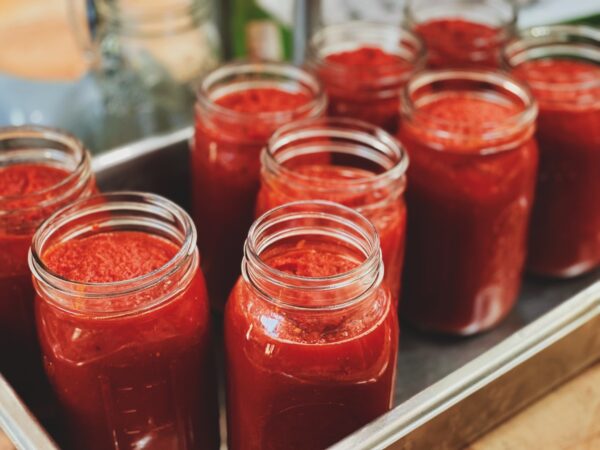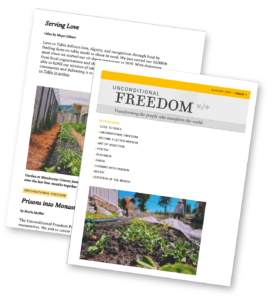by Jay Holecek
As a chef who has worked with food from all over the world, I find it very fulfilling to preserve and value add common ingredients that would have otherwise gone to waste. When you consider food preservation, most people think of those mysterious cans of pickles that sit in the back of our pantry that do no more for our sense of food security than for our actual meal planning and will likely be tossed or gifted. Food preservation, in a broader sense, is much more, and can be a great way of building community, finding more pleasure in nourishing ourselves, creating food security, reconnecting with the seasons and the abundance of edible and medicinal ingredients in our bio-region, and just the fulfillment of creating something we made.
I’ve had the fortunate opportunity to be invited to use my skills in food craft preservation here at The Land for the community and the community outreach programs we lead. Even with this year of fires and drought, we have seen an abundance that the land can produce with a little time and attention. In fact, the harvest has been overwhelming. When we are faced with short windows of harvest and usability of bounty like herbs and fruits, it becomes a full-time job to just keep things from going bad and ending up in the compost. But with some helping hands, hungry bellies, useful tools, creativity, and some internet searching, we can turn our excesses into manageable bites for all to enjoy, and you can do the same.
When considering what to do with a food to “preserve it,” here are a few considerations:
–What can I make with this, and will I actually eat it? If I don’t like apple sauce, then what else can I make that I’ll enjoy?
–How will I be able to process it and store it? The more tools and skills I have, I’ll be able to make multiple products from one type of food.
–When? How much time do I want to put into making something, and how long will it last? A freshly made apple sauce will only last a few weeks in the fridge, but a well dried fruit or fruit leather packaged well can last for years.
–Why? Excuses are plenty, reasons are rare… find one reason why you would want to preserve and you will find the motivation. Is it for your health, connecting with your community, or establishing a gifting economy?
Here is a list of some of the products we’ve produced so far with the harvest on the Land this year:
Apples: approx 1,800 lbs
apple sauce, apple slices for pies, apple juice, apple molasses, apple mustarda, apple chutney, apple chips, apple cider vinegar, apple fruit leather
Pears: approx 500 lbs
pear butter, pear fruit leather, pear chips, pear syrup, pear vinegar, pear molasses
Tomatoes: approx 100 lbs
tomato sauce, tomato juice, tomato paste, ketchup, slow roasted tomatoes in oil, salsa, tomato basil fruit leather
Plums: approx 400 lbs
dried plums, saladitos (salted and dried plums), plum fruit leather, rose and plum jelly, plum jam, plum balsamic, plum shrub, plum juice
Peaches: approx 60 lbs
peach popsicles, peach jam, dried peaches, peach hydrosol, peach juice
Grapes: approx 300 lbs
grape vinegar, balsamic vinegar, grape juice, grape syrup
Onions: approx 150 lbs
caramelized onions for chutney and ketchups, dried powdered green onion tops, seasoned herb salt blends, salsas
Misc herbs:
hydrosols and essential oils (used in body care, flavored drinks, and foods), tea blends, body care products
Other creative ways to preserve:
distilling, juicing, fermenting, salting, tincture, smoking
Resources for more information:
National center for food preserving
Wild fermentations
UC Master food preserver program
Buena Salud!

 Get access to the monthly Rehumanization Magazine featuring contributors from the front lines of this effort—those living on Death Row, residents of the largest women’s prison in the world, renowned ecologists, the food insecure, and veteran correctional officers alike.
Get access to the monthly Rehumanization Magazine featuring contributors from the front lines of this effort—those living on Death Row, residents of the largest women’s prison in the world, renowned ecologists, the food insecure, and veteran correctional officers alike.